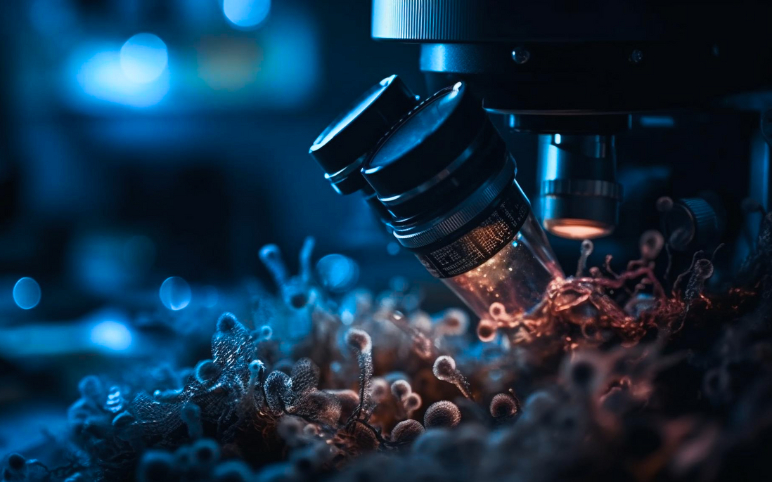Karl Storz believed the deal would enhance its portfolio and strengthen its market presence in the surgical robotics space. The company specifically emphasized the ongoing development of Asensus Surgical’s next-generation Luna platform.
Asensus stated that it plans to work quickly to obtain stockholder approval and expects the transaction to close in the third quarter of this year. Upon completion, Asensus will become a subsidiary of Karl Storz Endoscopy-America.
“We are pleased to have reached this agreement with KARL STORZ, which we believe maximizes value for our stockholders,” said Anthony Fernando, Asensus Surgical president and CEO. “This transaction is a testament to the value of our innovative robotic and digital technology, intellectual property, and the hard work of our talented team. We are excited to enter the next chapter for Asensus with Karl Storz, which will allow us to continue to develop and deliver precise, safer, predictable surgery and digital tools to patients and surgeons around the world.”
As per DelveInsight’s “Surgical Robotic System Market Report”, the global Surgical Robotic Systems market was valued at USD 5.02 billion in 2023, growing at a CAGR of 11.50% during the forecast period from 2024 to 2030 to reach USD 9.64 billion by 2030. The demand for Surgical Robotic Systems is witnessing a surge due to increasing surgical procedures which can be attributed to various factors such as the increasing geriatric population who form a big part of the at-risk population for prostate cancer, valvular diseases, endometriosis among other diseases, the growing need for robot-assisted surgery systems due to the growing inclination towards minimally invasive surgical approaches, and the innovation in product development which is paving the way for miniaturized surgical robots ultimately contributing in the overall growth of the Surgical Robotic Systems market during the forecast period from 2024-2030.
Allosource® Launched Aceconnex®, the First Pre-Sutured Fascia Device for Hip Labral Reconstruction and Augmentation
On June 11, 2024, AlloSource®, a leading provider of allografts that develops innovative cellular and tissue products to assist surgeons in healing their patients, announced the launch of its AceConnex® Pre-Sutured Fascia device. This product is the only 510(k) cleared pre-sutured fascia allograft for hip labral reconstruction and augmentation, and it had already been transplanted across the United States during its limited launch.
“The AceConnex pre-sutured labral reconstruction graft has been a game changer for me as it helps to simplify a complicated and time-intensive surgery,” said Dr. Winston Gwathmey, Orthopedic Surgeon Specializing in Sports Medicine and Arthroscopy of the Shoulder, Hip and Knee at the University of Virginia. “Eliminating the graft preparation step allows me to focus my attention and time to the rim prep and FAI correction. The graft handles well inside the joint and effectively recreates the labral anatomy.”
As a pre-sutured fascia that is manufactured, AceConnex ensures consistency, reduces variability, and remains tightly bound compared to allografts sutured in the operating room. The AceConnex Pre-Sutured Fascia device is designed for use in soft tissue surgical procedures, particularly for the reconstruction or augmentation of the labrum using allograft tissue. It is ready to use, eliminating the need for intraoperative suturing and thereby saving time in an already lengthy reconstruction procedure.
“AceConnex Pre-Sutured Fascia demonstrates AlloSource’s commitment to providing innovative products to support surgeons, in this case specifically hip arthroscopists,” said Dean Elliott, AlloSource President and CEO. “With the positive feedback from surgeons who have used the product, we are excited to get it in the hands of more medical professionals, as we embark on this full launch.”
According to DelveInsight’s “Hip Reconstruction Devices Market Report”, the global Hip Replacement Devices Market was valued at USD 9.26 billion in 2023, growing at a CAGR of 5.06% during the forecast period from 2024 to 2030 to reach USD 12.44 billion by 2030. The rise in demand for Hip Replacement Devices is primarily due to the rising geriatric population across the globe, the increase in obesity owing to a sedentary lifestyle, the introduction of custom-made implants, and technological advancement in the product portfolio, among others.
Siemens Healthineers Secured FDA Clearance for Chiller-Free Biograph Trinion PET/CT
On June 09, 2024, Siemens Healthineers announced that its new Biograph Trinion PET/CT scanner had received FDA clearance for use in oncology, theranostics, cardiology, and neurology applications.
“There is a growing interest in PET/CT due to new types of clinical indications, new radiotracer developments coming to the market, and a lot of excitement in the field of theranostics,” Daniel Santolin, global product marketing manager of Siemens Healthineers’ Molecular Imaging business.
This new scanner features an air-cooled, digital detector based on lutetium oxyorthosilicate crystal elements. As a result, the system delivers high spatial resolution, ultrafast time-of-flight performance of 239 picoseconds, and enhanced sensitivity for detecting small lesions, all while providing fast, low-dose scans. Its technology incorporates integrated microlens arrays and ultra-high pixel density displays, enabling the real-time generation of ray-traced, multi-focal optotypes.
“What’s unique about the system is the level of performance that we deliver on an air-cooled, scalable design,” explained Santolin. “For everything else in the market, to achieve this level of performance, you need to go with a water-cooled system because higher performance means you need to have higher stability.”
Siemens Healthineers applied its expertise in achieving stability with water-cooled systems to its air-cooled technology. According to Santolin, this resulted in the highest-performing air-cooled system on the market. The installation of an air-cooled system was significantly streamlined as it eliminates the need for a chiller, relying instead on the room’s air conditioning. Additionally, this system removes the requirement for a dedicated computer equipment room by integrating the computer technology directly into the gantry itself.
“The equipment room has no use for the site other than storing a bunch of computers,” said Santolin. “We eliminated that so users can move from a three-room setup to a two-room setup, and that saves a lot of cost in terms of infrastructure.”
Users can potentially achieve cost savings with the system’s intelligent power-save mode, which shuts down the system overnight and automatically restarts it the next morning. This feature can lead to energy savings of up to 46% annually.
The system utilizes artificial intelligence to drive its workflow and integrates the company’s myExam Companion intelligent user interface, automating tasks and guiding users through each stage of the examination process.
“Patients coming in for an oncology scan are dealing with a lot of things, so there is always the benefit of making this a better experience as much as we can for them,” said Santolin. “Our users and their patients are really excited about that.”
As per DelveInsight’s “Computed Tomography Market Report”, the global Computed Tomography (CT) Devices Market was valued at USD 6.13 billion in 2023, growing at a CAGR of 6.36% during the forecast period from 2024 to 2030 to reach USD 8.87 billion by 2030. The Computed Tomography (CT) Devices market is witnessing positive growth owing to the rising incidence of severe chronic diseases such as cardiovascular, oncology, and others, further rapid technological developmental activities, growing awareness for early detection, and increasing incidences of the aging population, thereby contributing to the growth of the Computed Tomography (CT) Devices market during the forecast period from 2024-2030.
Abbott Received FDA Clearance for its Lingo OTC Glucose Monitor
On June 03, 2024, Abbott received FDA 510(k) clearance for its Lingo bio-wearable glucose monitoring device for over-the-counter use.
Abbott’s Lingo received FDA clearance over two months after Dexcom obtained clearance for its Stelo continuous glucose monitor (CGM) for over-the-counter use. Officials from both companies have expressed enthusiasm about selling CGMs to athletes and others who may not have diabetes but see advantages in monitoring their blood glucose levels.
In April, William Blair analyst Margaret Kaczor expressed surprise that the companies had added almost 300,000 new non-insulin continuous glucose monitor (CGM) users, surpassing the projected 200,000.
Abbott’s Lingo informs users about glucose spikes and their body’s responses to food, sleep, and exercise. The aim is to help users effectively reduce these spikes throughout the day. Lingo learns about the user’s metabolism from the sensor data and sets a daily target accordingly.
According to DelveInsight’s “Blood Glucose Monitoring Systems Market Report”, the global blood glucose monitoring systems market was valued at USD 13.06 billion in 2023, growing at a CAGR of 7.72% during the forecast period from 2024 to 2030, to reach USD 20.40 billion by 2030. The escalating demand for blood glucose monitoring systems is predominantly attributed to the increasing prevalence of diabetes among the population across the globe and the growing burden of the geriatric population who are susceptible to developing hyperglycemia. In addition, the spike in technologically advanced blood glucose monitoring devices product launch and government initiatives to raise awareness regarding proper diabetes management, among others are the factors likely to spur the global blood glucose monitoring systems market.
Foldax® Reported Positive Clinical Results for TRIA Mitral Surgical Heart Valve Using Novel LifePolymer Material
On June 11, 2024, Foldax®, Inc., a pioneer in the development of innovative polymer heart valves, announced positive 30-day results from a prospective, multicenter, single-arm clinical study of the TRIA™ mitral surgical heart valve with LifePolymer™ conducted in India. At 30 days post-surgery, the TRIA valve demonstrated favorable safety and hemodynamic performance, aligning with established standards for heart valves.
TRIA valves are designed to enhance the long-term management of heart valve disease in patients. They feature a proprietary polymer called LifePolymer™, which is utilized in computer-designed leaflets proven to resist calcification. This innovative polymer allows TRIA valves to be manufactured robotically, improving production efficiency and ensuring high product quality and precision. Clinical studies have demonstrated that TRIA valves maintain excellent and stable hemodynamics in patients, restoring their quality of life without necessitating long-term use of anticoagulants where clinically appropriate.
“The LifePolymer material is uniquely formulated for heart valves and has been shown in animal studies to resist calcification, which can lead to stiffening leaflets that restrict blood flow through the valve,” said Dr. George. “Now, in the India study, imaging of the TRIA mitral surgical valve in humans at 30 days shows no sign of calcifying or deteriorating leaflets. A durable non-animal tissue heart valve that may not require long-term anti-blood clotting medication could be transformative in providing new options for patients suffering from mitral valve disease,” he said.
The TRIA mitral surgical valve study included 67 patients aged 19 to 67 years across eight sites in India. A majority of the participants were females with rheumatic heart disease, which typically affects a younger patient demographic compared to other valve diseases. The study represented the largest clinical assessment of a polymer heart valve conducted in humans worldwide. Patients will undergo evaluations at six months and one year to assess safety, hemodynamic performance, and durability.
At the New York Valves meeting, a case study was presented on the first patient with rheumatic heart disease treated using the TRIA mitral surgical valve in India, along with an innovative presentation on the TRIA valve platform. Furthermore, technical and clinical presentations on the TRIA mitral surgical valve and TRIA transcatheter aortic valve replacement (TAVR) were delivered at the International Society for Minimally Invasive Cardiac Surgery (ISMICS) conference in Athens, Greece earlier this month.
“We are encouraged by the strong clinical outcomes we are seeing with our patients in the Indian trial,” said Kaushal Pandey, MD, with P.D. Hinduja Hospital in Mumbai, India, principal investigator of the Indian study. “In the case study I presented at the New York Valves meeting, the patient is a young female of childbearing age. The potential to provide this patient, and others, with a durable heart valve that doesn’t require long-term use of blood thinners and may therefore provide her with the opportunity to pursue a family, is exciting and is something she cannot experience with currently available commercial mitral heart valves without risk of future operations.”
The TRIA heart valve is currently for investigational use only and is not available for commercial sale in the U.S. or any other region.
According to DelveInsight’s “Transcatheter Heart Valve Replacement Market Report”, the global transcatheter heart valve replacement market is estimated to grow at a CAGR of 13.75% during the forecast period from 2024 to 2030. The transcatheter heart valve replacement market is observing significant market growth primarily owing to the growing number of valvular heart diseases and aortic stenosis disorders across the globe. Further, the rising focus on minimally invasive surgeries, increasing technological advancements in device & surgical procedures, the increasing burden of the geriatric population prone to aortic stenosis, mitral regurgitation, and other cardiovascular disorders, increasing burden of risk factors leading to valvular diseases, presence of a large number of devices in the pipeline, increasing product launches and approvals, surging investments by key players, among others will ultimately affect the demand for transcatheter heart valve during the forecast period from 2024-2030 growing at a substantial CAGR.
Amber Implants Completed Enrolment of First-In-Human Clinical Trial of its VCFix® Spinal System
On June 11, 2024, Amber Implants, a pioneering medical technology firm focused on advancing next-generation implants for spinal injuries, announced the completion of enrolment for its first-in-human clinical trial involving the innovative VCFix® Spinal System. This system represented a breakthrough as the first device designed to treat vertebral compression fractures without the use of bone cement.
The trial took place at two centers in Germany under the supervision of Prof. Dr. Med. Robert Pflugmacher, an orthopedic surgeon at Kreiskrankenhaus Mechernich GmbH, and Dr. Med. Ardeshir Ardeshiri, a neurosurgeon at Wilhelmsburger Krankenhaus Groß-Sand Hamburg. It evaluated the safety and effectiveness of the VCFix® Spinal System for patients with osteoporotic vertebral compression fractures. The device was primarily utilized without bone cement in a stand-alone configuration.
The study included 10 patients, all experiencing severe disabling pain with Disability Ratings of 70% or higher. After undergoing the procedure, which typically lasted less than 20 minutes, all patients experienced significant pain reduction, with Disability Ratings decreasing to 10% or lower. Upon discharge, they regained the ability to walk freely without disability.
The short-term efficacy data, as well as the performance of the device, had shown promising results and will be further assessed in the continuation of this trial. Prof. Dr. Med. Robert Pflugmacher said: “VCFix represents a remarkable innovation, significantly improving the reconstruction of fractured vertebrae”. “This technology has proven to be user-friendly and has yielded exceptional short-term outcomes for our patients”, added Dr. Med. Ardeshir Ardeshiri.
The Company is preparing to commence pivotal clinical trials for the same intended use (standalone and with and without cement), as well as to evaluate the device with a posterior fixation method for high-energy traumatic fractures. Amber is planning to conduct these pivotal trials across a broader European setting by the end of the year and is working towards obtaining Food and Drug Administration (‘FDA’) clearance for its initial indication by early 2025.
“Short-term efficacy data from the study is very promising, with results even exceeding our expectations. Patients have experienced significant pain relief and regained the ability to walk without discomfort. VCFix® has the potential to be a disruptive technology for the millions of patients who suffer from vertebral fractures each year. We are now focused on preparing for pivotal trials in Europe to bring the benefits of this technology to the many more patients who would otherwise suffer from the high rate of complications associated with other treatment options available.”
Each year, more than 8.6 million individuals experience various types of vertebral fractures, which result in significant back pain, restricted mobility, disability, and an elevated risk of mortality. Currently, vertebral compression fractures are typically treated with the injection of Polymethyl Methacrylate (PMMA) bone cement into the affected vertebra and/or through multi-level posterior fixation. However, these approaches can lead to side effects in up to two-thirds of patients after treatment.
The VCFix® Spinal System is engineered to restore spinal integrity and deliver optimal stability to affected spinal segments. VCFix® introduces an innovative approach to treating various vertebral fractures, accommodating both cemented and non-cemented techniques and including options with and without posterior fixation. It addresses a wide spectrum of indications, from osteoporotic fractures with low energy to traumatic fractures with high energy, making it a potentially transformative technology for this patient group. The VCFix® Spinal System has received a breakthrough designation from the FDA.
According to DelveInsight’s “Spinal Implants Market Report”, the global Spinal Implants Market was valued at USD 13.01 billion in 2023, growing at a CAGR of 5.40% during the forecast period from 2024 to 2030 to reach USD 17.84 billion by 2030. The rise in demand for Spinal Implants is predominantly attributed due to the increasing prevalence of various spinal disorders which include spinal stenosis, disc herniation, and degenerative disc diseases, among others in the older population across the globe. Moreover, the shifting focus towards technological advancement in bone graft products, rising awareness among the patient population regarding spinal disorder and their proper management, and rising preferences for minimally invasive surgeries are the factors driving the spinal implant market.



